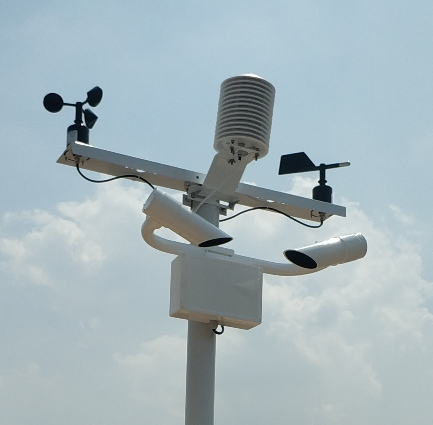Merging a weather station with a solar power system boosts energy generation and efficiency. Weather factors affect solar panel output, so tracking them in real-time helps operators make smart decisions and improve performance. This article covers the key steps and benefits.
Optimized Energy Production – Adjust solar panel settings using real-time weather data.
Performance Analysis – Spot inefficiencies caused by environmental factors.
Preventative Maintenance – Identify weather conditions that could harm solar panel life.
Grid Stability and Forecasting – Enhance solar energy forecasting for better grid integration.
Enhanced Safety – Monitor wind, rain, and severe weather to safeguard solar assets.
Measures sunlight available for energy conversion.
Helps assess solar panel efficiency and predict power output.
Tracks air and panel surface temperatures.
Assists in calculating energy loss from heat.
Optimizes cooling methods and system efficiency.
Supplies data for analyzing wind load and ensuring panel stability.
Protects solar farms from wind damage risks.
Measures moisture levels that may impact panel efficiency.
Helps plan cleaning schedules based on dust and rain.
Monitors atmospheric pressure changes that signal weather shifts.
Useful for maintenance and power output predictions.
Important for solar farms using agrivoltaic systems.
Ensures effective land use for dual-purpose solar projects.

Choose a weather station that supports needed sensors and communication methods (RS485, Modbus, or wireless). Ensure it works with the solar monitoring platform.
Solar radiation sensors should be placed near solar panels for precise data.
Temperature sensors must go in ambient air and on panel surfaces.
Wind and humidity sensors should be on a mast above ground level for clear readings.
Rain and barometric pressure sensors work best in open areas. This helps them monitor conditions effectively.
Use RS485 Modbus, Ethernet, or wireless connections to send data.
Make sure the weather station works with the solar power plant’s SCADA (Supervisory Control and Data Acquisition) system or a cloud-based platform.
Calibrate sensors for precise data gathering.
Track real-time weather to modify panel orientation and operations.
Compare weather data with solar output to find efficiency patterns.
Use predictive analytics for maintenance and generation forecasts.
Adjust solar tracking based on sunlight levels.
Activate cooling or shading if panel temps go too high.
Follow safety protocols when wind speeds reach dangerous levels.
Increased Efficiency – Real-time adjustments enhance solar panel output.
Better Forecasting – Accurate weather data improves production predictions.
Reduced Maintenance Costs – Preventive actions extend panel life and cut costs.
Sustainability & Smart Grid Integration – More stable energy outputs support grid reliability.
For top-quality weather sensors that work with solar power systems, **Coda Sensor** has advanced solutions. Their devices deliver accurate real-time data. This helps solar farms improve performance and safeguard their infrastructure.
Reliable, high-precision sensors for PV weather monitoring.
Seamless integration with SCADA and solar management systems.
Durable, weather-resistant technology for lasting performance.
Custom solutions for solar farms, rooftop setups, and floating solar projects.
Integrating a weather station with a solar power system is vital for enhancing energy generation and efficiency. With high-quality weather sensors and real-time data, solar operators can improve output and protect their assets. Coda Sensor provides excellent solutions for solar weather monitoring, ensuring effective environmental tracking and maximizing renewable energy efficiency.
Learn how CODA Sensor solar radiation and PAR se
Discover how real-time weather station data impr
Discover how Automatic Weather Stations (AWS) ar
Contact: Molly
Phone: +86-17775769236
Tel: 86-0731-85117089
Email: molly@codasensor.com
Add: Building S5, Aux Square, Yuelu District, Changsha City, Hunan Province, China
We chat